Presidential Houses From Around The World
By Sarah Smith
1 year ago
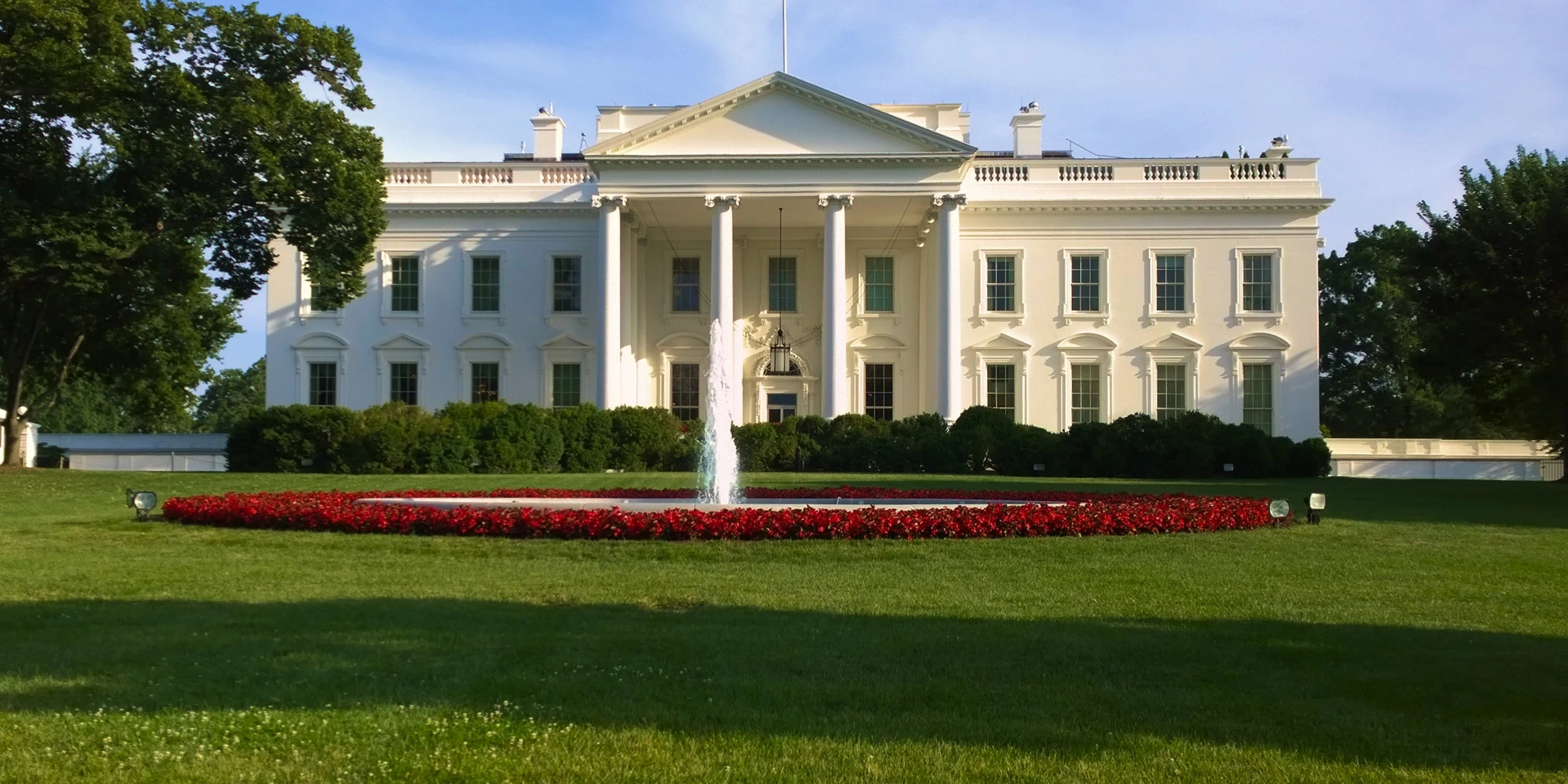 Source: The White HouseCompleted in 1800, the majority of folks would probably recognise the home of POTUS. It was originally called "The Executive Mansion," but was given its lasting nick name by President Theodore Roosevelt in 1901. With 132 rooms and approximately 55,000 square feet, it's is a serious piece of real estate.
Source: The White HouseCompleted in 1800, the majority of folks would probably recognise the home of POTUS. It was originally called "The Executive Mansion," but was given its lasting nick name by President Theodore Roosevelt in 1901. With 132 rooms and approximately 55,000 square feet, it's is a serious piece of real estate.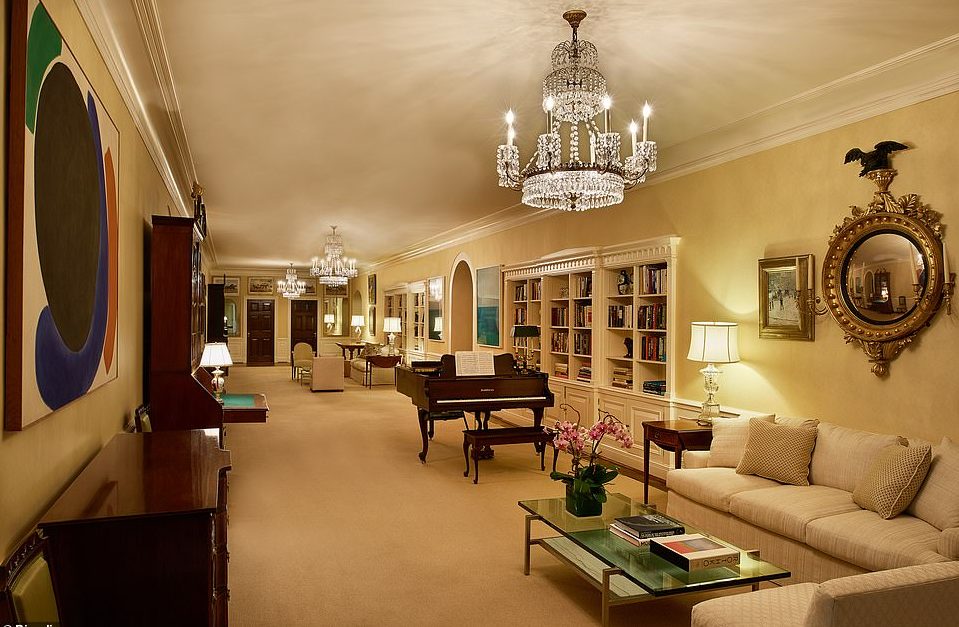 Source: House Beautiful
Source: House Beautiful Source: The Sumter ItemThere's not a whole lot you can do about the overall impression of the room when it's called "The Red/Green/ Yellow Room" surely? So, more often than not, the current president's influence is all in the detail. Former First Lady Melania Trump for instance, designed a rug for the Diplomatic Reception Room which showed the flowers of the 50 states. Cute. Hopefully her husband liked it, as when they arrived he referred to the general vibe of the place as a "real dump." Charmer.
Source: The Sumter ItemThere's not a whole lot you can do about the overall impression of the room when it's called "The Red/Green/ Yellow Room" surely? So, more often than not, the current president's influence is all in the detail. Former First Lady Melania Trump for instance, designed a rug for the Diplomatic Reception Room which showed the flowers of the 50 states. Cute. Hopefully her husband liked it, as when they arrived he referred to the general vibe of the place as a "real dump." Charmer.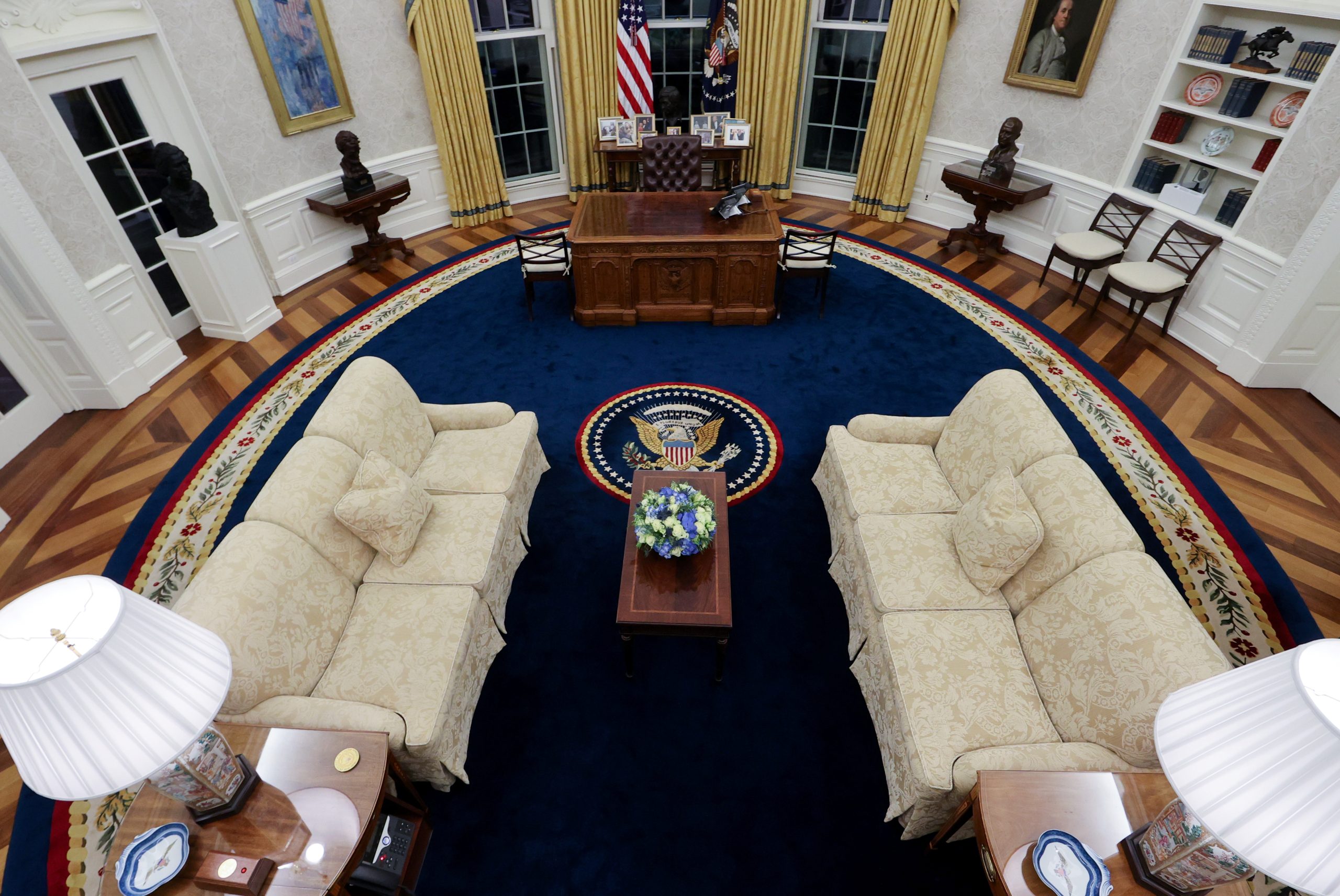 Source: Reuters
Source: Reuters
 Source: Wikipedia
Source: Wikipedia
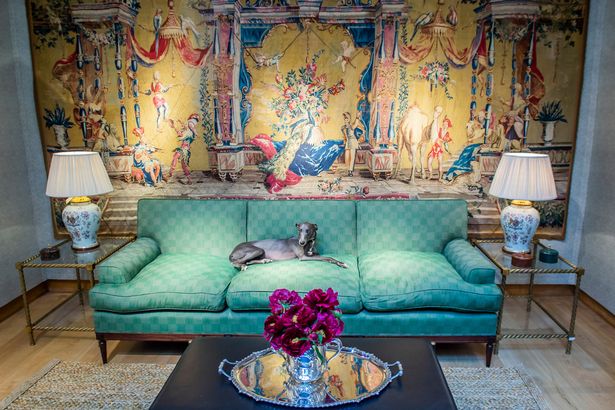 Source: The MirrorThe interior of the Prime minister's flat has changed fairly drastically with each new resident, especially recently. Boris Johnson's new paint job did little to endear him to his public, once it emerged it had cost as much as £200,000. Each PM is allowed £30,000 annually to spend on their home (paid for by the British taxpayer.) The rest was paid for by donors (which Boris failed to disclose correctly. Oops.) More issues followed, when the non-refundable £840-per-roll gold wallpaper stated to peel.
Source: The MirrorThe interior of the Prime minister's flat has changed fairly drastically with each new resident, especially recently. Boris Johnson's new paint job did little to endear him to his public, once it emerged it had cost as much as £200,000. Each PM is allowed £30,000 annually to spend on their home (paid for by the British taxpayer.) The rest was paid for by donors (which Boris failed to disclose correctly. Oops.) More issues followed, when the non-refundable £840-per-roll gold wallpaper stated to peel.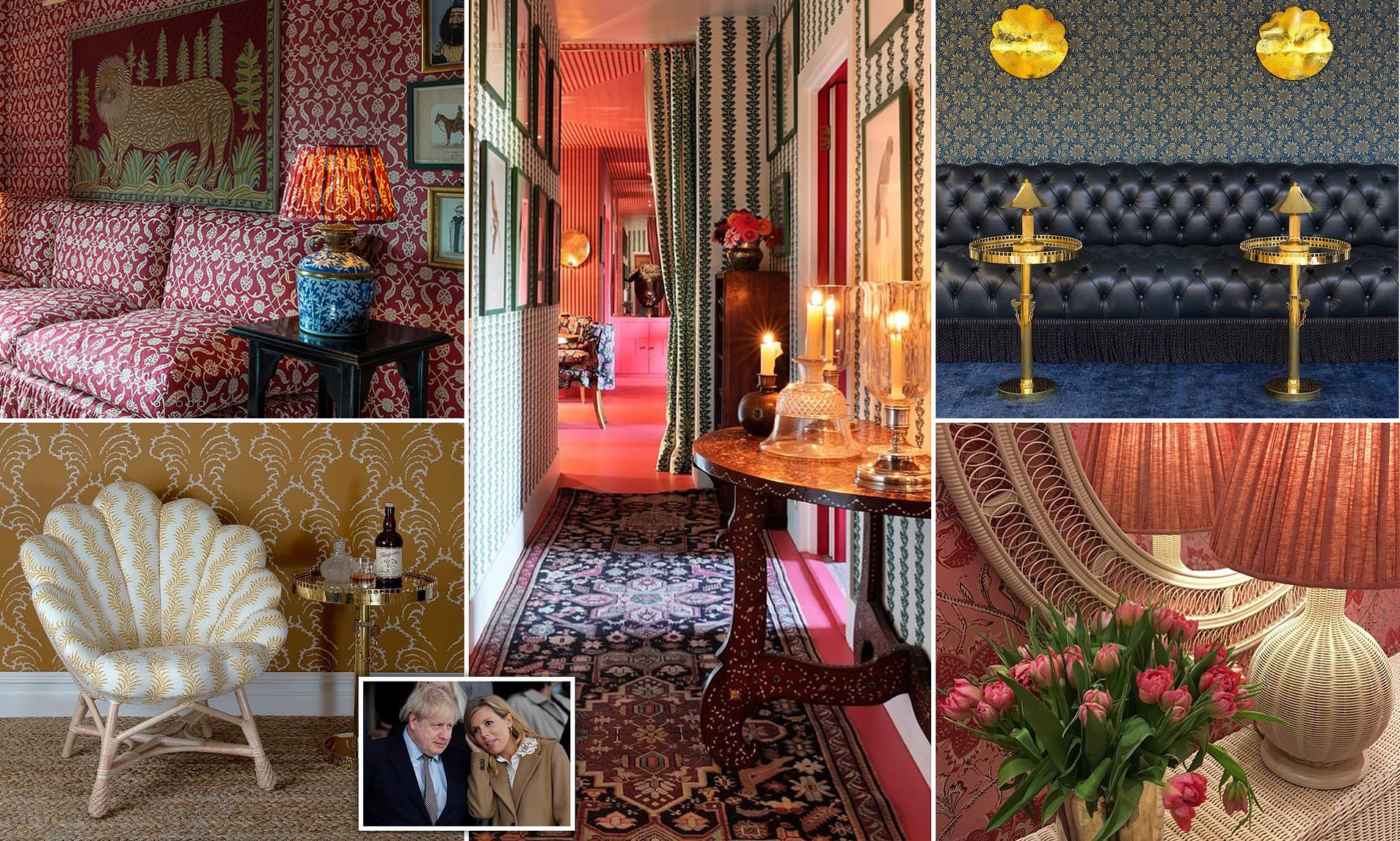 Source: Daily MailWe can't see either of Boris' possible imminent successors tolerating the intense patterns for long. Still, to each their own. Boris has 2 small kids with current wife Carrie, so we assume, if you pan the camera around, the Instagram bubble will pop and the stacks of toys be revealed?
Source: Daily MailWe can't see either of Boris' possible imminent successors tolerating the intense patterns for long. Still, to each their own. Boris has 2 small kids with current wife Carrie, so we assume, if you pan the camera around, the Instagram bubble will pop and the stacks of toys be revealed?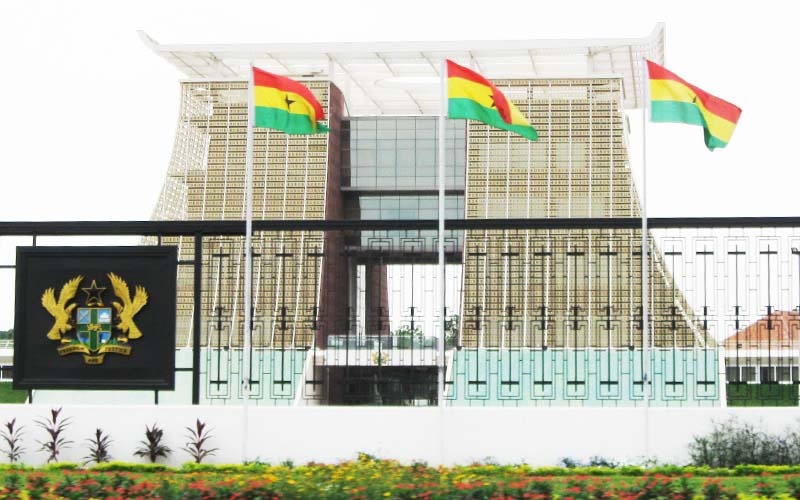 Source: Ghana Embassy ZimbabweBuilt much more recently in 2008, "The Golden Jubilee House", or "Flagstaff House" as it's sometimes called, cost $40 million. The cost was strongly criticised by the oppositional party as, it rightly said, many poorer areas of the country were really struggling. Standing proud in the Ghanaian capital of Accra, and was inspired by the traditional Ghanaian royal stool.
Source: Ghana Embassy ZimbabweBuilt much more recently in 2008, "The Golden Jubilee House", or "Flagstaff House" as it's sometimes called, cost $40 million. The cost was strongly criticised by the oppositional party as, it rightly said, many poorer areas of the country were really struggling. Standing proud in the Ghanaian capital of Accra, and was inspired by the traditional Ghanaian royal stool.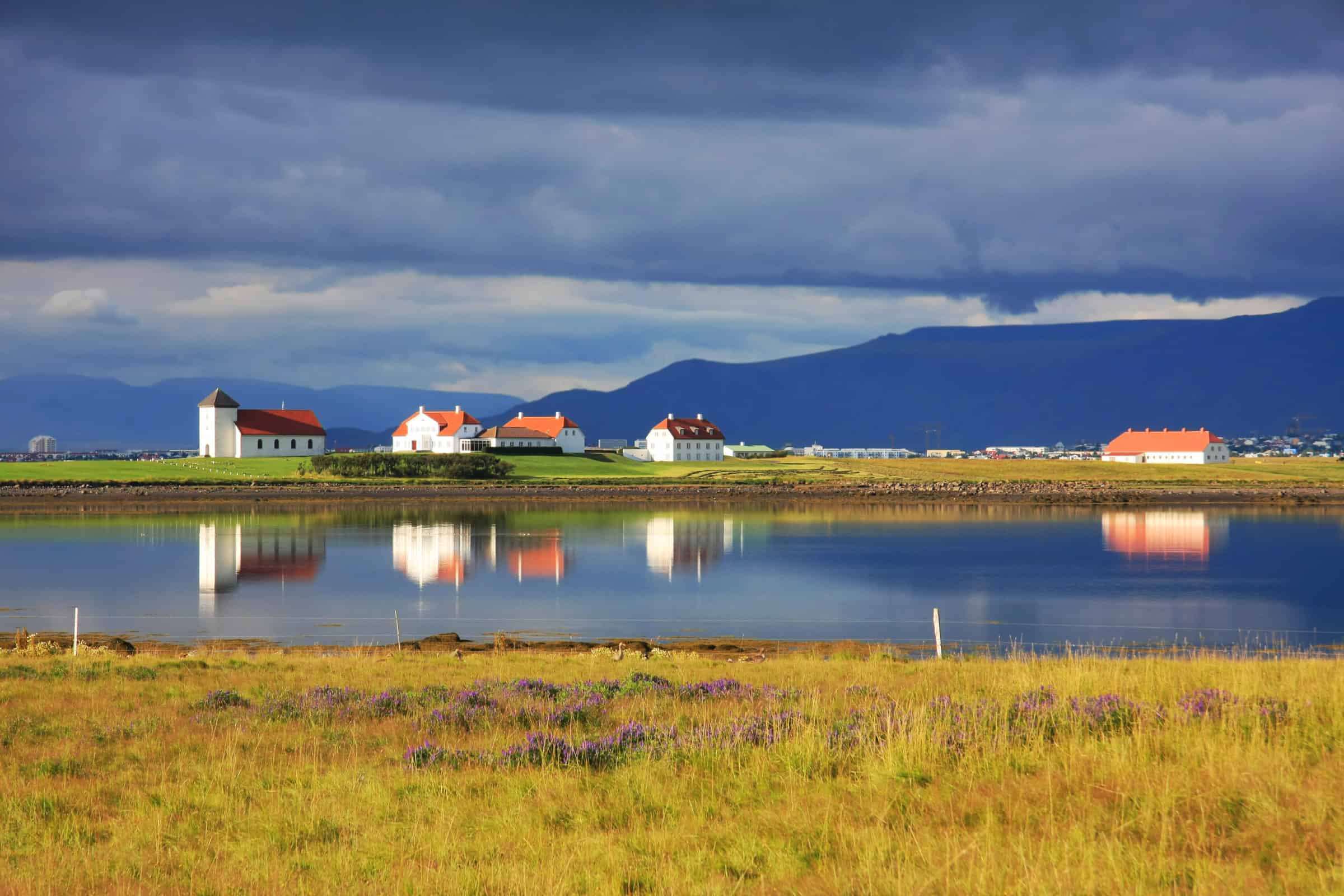 Source: Iceland Travel
Source: Iceland TravelBessastaðir is the official residence of the President of Iceland and is situated in Álftanes, across the water from the capital city of Reykjavík. Its history can be traced back to the 13th century, when it was originally a farm. Since then, it has been a home to royal officers, a school, a farm (again), then home of the poet and statesman Grímur Thomsen. It was donated to the state in 1941.
 Source: TwitterIt may not be to the scale or grandeur levels of the Oval Office, but given that Icelandic temperatures hover between 32 and 50 degrees, the cosier the better, we think. Here we can see the president's office, warmly lit with luxury furnishings and plenty of photographs. We could see working here.
Source: TwitterIt may not be to the scale or grandeur levels of the Oval Office, but given that Icelandic temperatures hover between 32 and 50 degrees, the cosier the better, we think. Here we can see the president's office, warmly lit with luxury furnishings and plenty of photographs. We could see working here. Source: Trip AdvisorThis stunning building is the ceremonial palace of the Sultan, the leader of Oman. It has a 200 year history and is one of six homes of the royal family. It was constructed in a traditional, Omani style, using mainly blues and gold on the exterior, perfect under the gloriously blue sky. (We're writing this in Northern England - can you tell? Well jealous.)
Source: Trip AdvisorThis stunning building is the ceremonial palace of the Sultan, the leader of Oman. It has a 200 year history and is one of six homes of the royal family. It was constructed in a traditional, Omani style, using mainly blues and gold on the exterior, perfect under the gloriously blue sky. (We're writing this in Northern England - can you tell? Well jealous.) Source: theculturetrip.comThe palace is surrounded by beautifully designed gardens, overlooked by wooden balconies. The polished marble and continued use of wood inside keeps the interior as simple yet elegant as the outside. Those stairs would certainly be fun to spouse down in a ball gown.
Source: theculturetrip.comThe palace is surrounded by beautifully designed gardens, overlooked by wooden balconies. The polished marble and continued use of wood inside keeps the interior as simple yet elegant as the outside. Those stairs would certainly be fun to spouse down in a ball gown.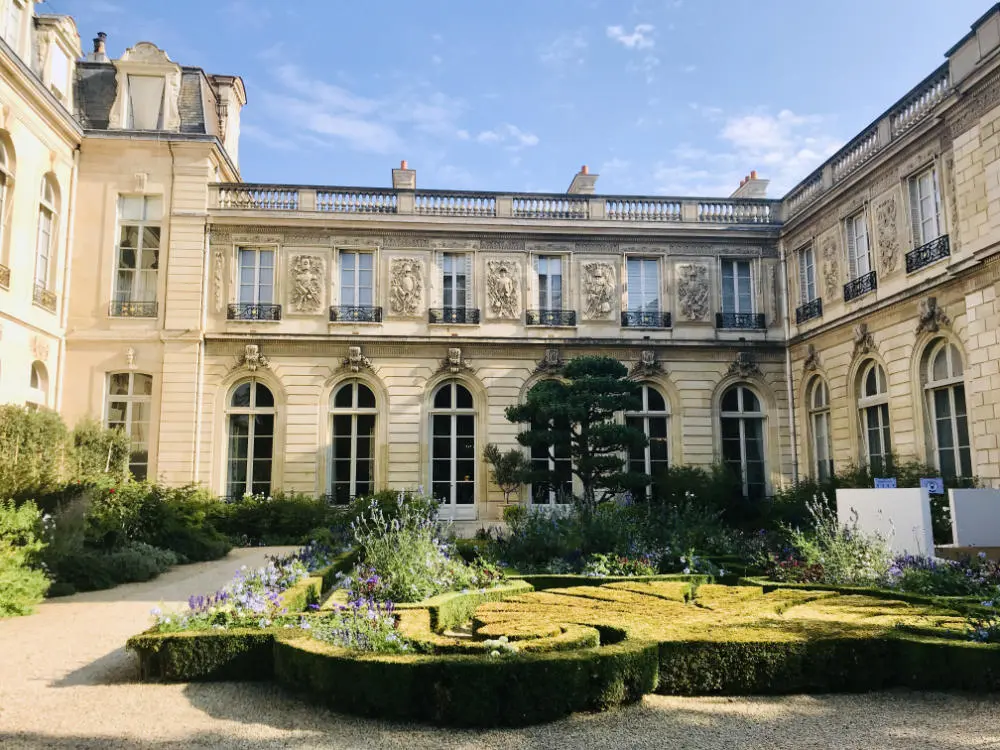 Source: snippetsofparis.comThis is the "small" courtyard at the official residence and office of the President of the Republic of France. Heavily guarded by security, it's only open to the pubic once a year. Still, the gardens are just lovely and well worth a visit if you happen to be there at the right time!
Source: snippetsofparis.comThis is the "small" courtyard at the official residence and office of the President of the Republic of France. Heavily guarded by security, it's only open to the pubic once a year. Still, the gardens are just lovely and well worth a visit if you happen to be there at the right time! Source: snippetsofparis.comIt's got to be difficult, being a resident in a palace full of chandlers and decedent wall panels, if you're a fan of more striking, modern and bold art, as President Macron appears to be. We're desperate to try out that sofa. Being president must be full on, you need space for a quick nap for sure.
Source: snippetsofparis.comIt's got to be difficult, being a resident in a palace full of chandlers and decedent wall panels, if you're a fan of more striking, modern and bold art, as President Macron appears to be. We're desperate to try out that sofa. Being president must be full on, you need space for a quick nap for sure.
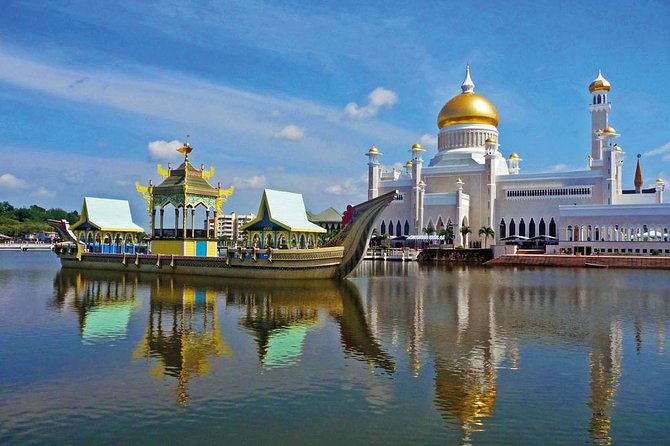 Source: ViatorThe size of the home of the Sultan of Brunei, Hassanal Bolkiah, and the seat of the Brunei government is quite literally insane. It has 1,788 rooms; a banquet hall big enough for 4,000 guests; 257 restrooms; 5 pools; a garage big enough for 110 cars and a stable for 200 polo horses. At 2.15 million sq feet, figures that it's the world's largest residential palace. The palace's name translates as "The Palace the Light of Faith." If you want to get in however you have a 3 day window as a tourist (usually following Ramadan), or you need to be on some serious official business.
Source: ViatorThe size of the home of the Sultan of Brunei, Hassanal Bolkiah, and the seat of the Brunei government is quite literally insane. It has 1,788 rooms; a banquet hall big enough for 4,000 guests; 257 restrooms; 5 pools; a garage big enough for 110 cars and a stable for 200 polo horses. At 2.15 million sq feet, figures that it's the world's largest residential palace. The palace's name translates as "The Palace the Light of Faith." If you want to get in however you have a 3 day window as a tourist (usually following Ramadan), or you need to be on some serious official business.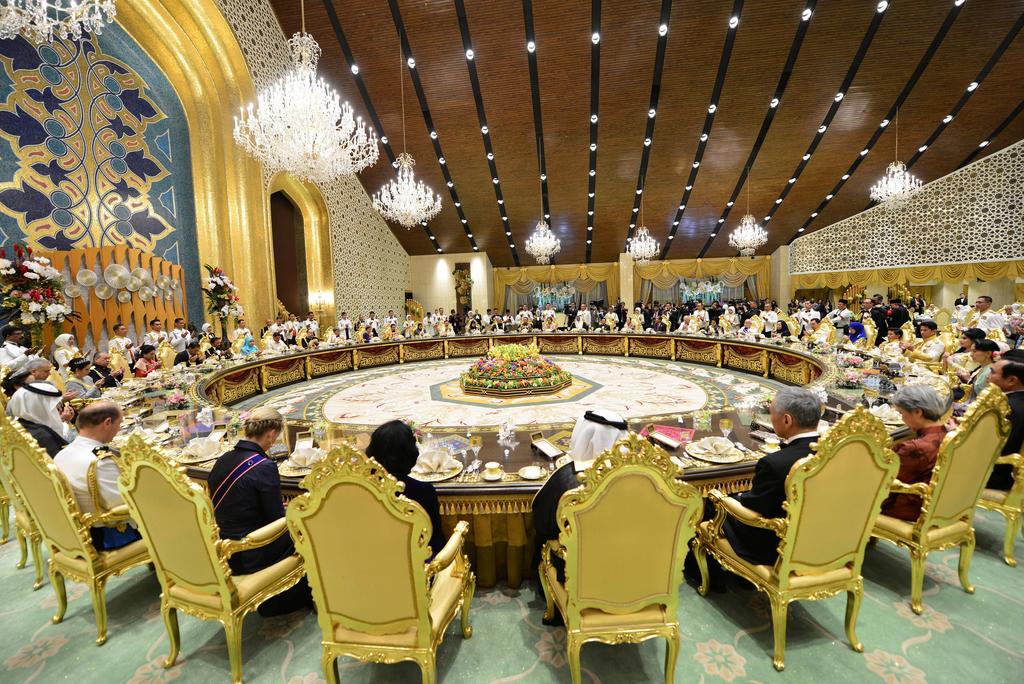
 Source: Trafalgar.comNow for some totally different vibes. Sitting 120m above the capital of Vaduz, the castle was probably built in the 12th century, but was only inhabited in 1287; the royal family moved in in 1712. Some serious renovations were needed in both the 1900s and the 1930s, but it is now, quite literally, fit for a prince.
Source: Trafalgar.comNow for some totally different vibes. Sitting 120m above the capital of Vaduz, the castle was probably built in the 12th century, but was only inhabited in 1287; the royal family moved in in 1712. Some serious renovations were needed in both the 1900s and the 1930s, but it is now, quite literally, fit for a prince. Source: TwitterThe ancient castle is, sadly, closed to visitors not on business. As it is set so high up, the castle is easily visible from far around however. If you want to see the gardens, you need to rock up on Liechtenstein’s National Day, or Staatsfeiertag, which is celebrated on August 15. You'll need a free online ticket, but you get a drinks reception in the rose garden. How civilised.
Source: TwitterThe ancient castle is, sadly, closed to visitors not on business. As it is set so high up, the castle is easily visible from far around however. If you want to see the gardens, you need to rock up on Liechtenstein’s National Day, or Staatsfeiertag, which is celebrated on August 15. You'll need a free online ticket, but you get a drinks reception in the rose garden. How civilised. Source: rashtrapatisachivalaya.gov.inThis beautiful palace was built 1929, while India was still under British rule. It was originally built as the residence for the Viceroy of India, but has since metamorphosed into the beautiful structure we see today. Built by 1000s of tradesmen, it still takes 2,000 employees to take care of it. They are all housed with their families and have essential amenities in a small town ship on the estate.
Source: rashtrapatisachivalaya.gov.inThis beautiful palace was built 1929, while India was still under British rule. It was originally built as the residence for the Viceroy of India, but has since metamorphosed into the beautiful structure we see today. Built by 1000s of tradesmen, it still takes 2,000 employees to take care of it. They are all housed with their families and have essential amenities in a small town ship on the estate.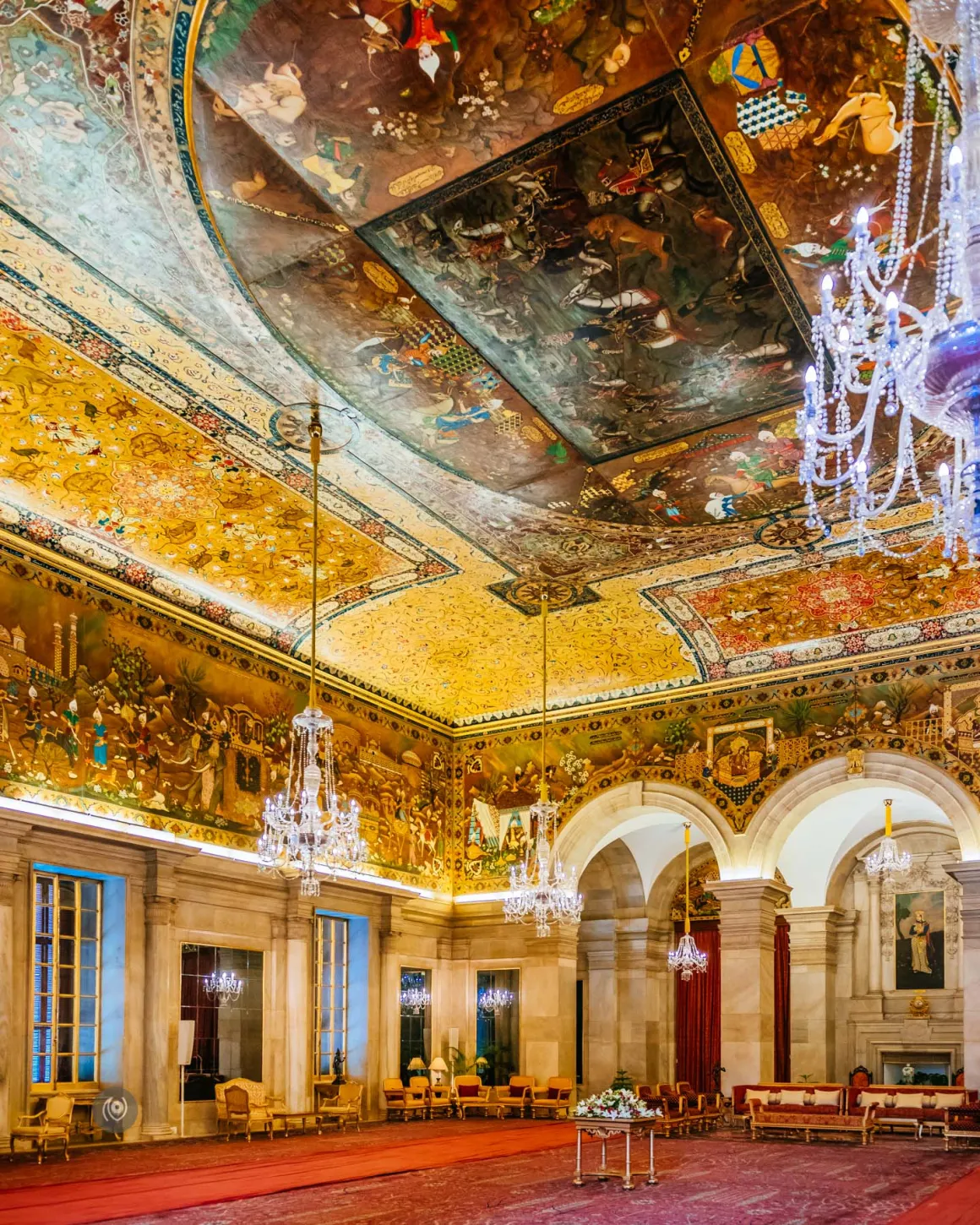 Source: naina.coUnlike many other royal and government spaces, when the former President of India Pranab Mukherjee moved in with his wife in 2012, they opened their new residence on weekends, offering guided tours to the public, as well as revamping the 'Changing of the Guard' ceremony to make it more easily accessible to the average citizen. He also began an in-residence program for artists, writers and innovation scholars in 2013.
Source: naina.coUnlike many other royal and government spaces, when the former President of India Pranab Mukherjee moved in with his wife in 2012, they opened their new residence on weekends, offering guided tours to the public, as well as revamping the 'Changing of the Guard' ceremony to make it more easily accessible to the average citizen. He also began an in-residence program for artists, writers and innovation scholars in 2013.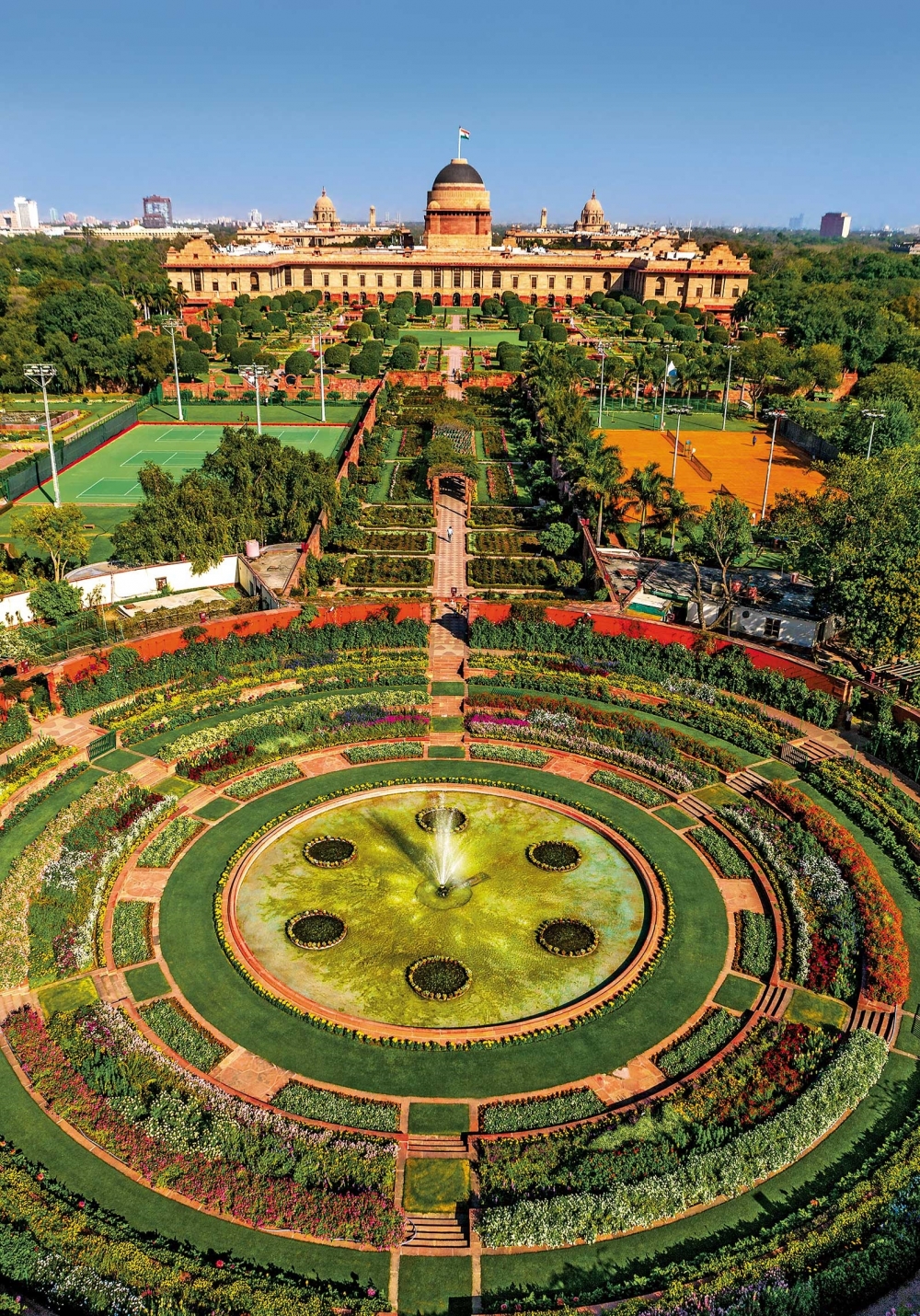 Source: sahapedia.orgThe gardens at the Rashtrapati Bhavan are basically their own thing. Known as the Mughal Gardens, they have been used as a 'state garden' ever since India's independence. They are 15 acres and host a staggering 70 varieties of flowers, almost 50 varieties of trees, shrubs and vines, lush greenery and majestic water fountains. They are open to the public for the month long garden festival, when thousands come to appreciate their beauty.
Source: sahapedia.orgThe gardens at the Rashtrapati Bhavan are basically their own thing. Known as the Mughal Gardens, they have been used as a 'state garden' ever since India's independence. They are 15 acres and host a staggering 70 varieties of flowers, almost 50 varieties of trees, shrubs and vines, lush greenery and majestic water fountains. They are open to the public for the month long garden festival, when thousands come to appreciate their beauty.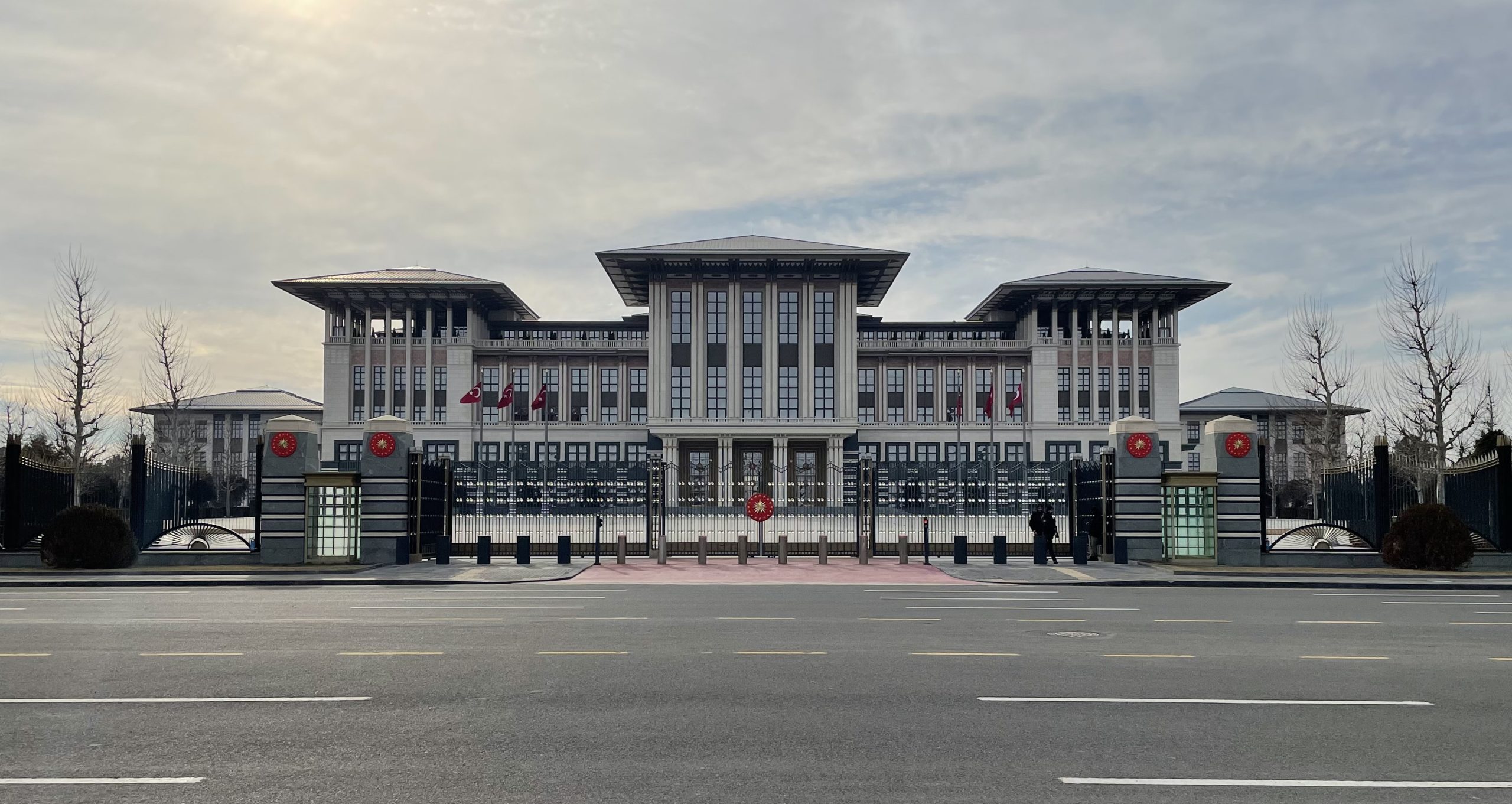 Source: WikipediaThis imposing, modern building had some seriously mixed reviews when it was unveiled in 2014. Ecologists referred to it as an "environmental blight" and the opposition party in Turkey saw it as a symbol of President Recep Tayyip Erdogan's belief in his own absolute power. It also cost upwards of $350million which can't have helped. It did have some supporters though, who appreciated it as a symbol of the President's drive towards a 'new Turkey.'
Source: WikipediaThis imposing, modern building had some seriously mixed reviews when it was unveiled in 2014. Ecologists referred to it as an "environmental blight" and the opposition party in Turkey saw it as a symbol of President Recep Tayyip Erdogan's belief in his own absolute power. It also cost upwards of $350million which can't have helped. It did have some supporters though, who appreciated it as a symbol of the President's drive towards a 'new Turkey.' Source: The GuardianThe interior of the complex is arguably as modern as the outside, with a twist. The architecture aims to combine the mediaeval Seljuk dynasty with the modern themes throughout. With 1,000 rooms, it's bigger than The White House and The Palace of Versailles. Regardless of size, one thing's for sure: it's very shiny.
Source: The GuardianThe interior of the complex is arguably as modern as the outside, with a twist. The architecture aims to combine the mediaeval Seljuk dynasty with the modern themes throughout. With 1,000 rooms, it's bigger than The White House and The Palace of Versailles. Regardless of size, one thing's for sure: it's very shiny. Source: spottinghistory.comNot to be confused with the Royal Palace of Brussels in the city centre, which is the official palace but not the residence of the King of the Belgians. From there, he handles state affairs, but he resides here, in Laeken. One can never have too many palaces, are we right? Revolutions, occupations and fires give this palace a complicated history, but it has been the official home of the royal family since Leopold I's accession in 1831.
Source: spottinghistory.comNot to be confused with the Royal Palace of Brussels in the city centre, which is the official palace but not the residence of the King of the Belgians. From there, he handles state affairs, but he resides here, in Laeken. One can never have too many palaces, are we right? Revolutions, occupations and fires give this palace a complicated history, but it has been the official home of the royal family since Leopold I's accession in 1831. Source: tootbus.comThere are several greenhouses within the grounds of the palace, which are traditionally open to the public for 3 weeks each spring. Pictured above it the Congo Greenhouse, which, despite originally housing plants from its namesake, is now home to species from sub-tropical areas such as China, Australia and California.
Source: tootbus.comThere are several greenhouses within the grounds of the palace, which are traditionally open to the public for 3 weeks each spring. Pictured above it the Congo Greenhouse, which, despite originally housing plants from its namesake, is now home to species from sub-tropical areas such as China, Australia and California. Source: Wikimedia CommonsBuild around 1818 by William I, this neoclassical structure is home to orange trees, camellias other cold-weather shrubs throughout the winter. It is, in fact, the largest collection of camellia's in the world, with 296 varieties. King Leopold II was a bit obsessed, it seems.
Source: Wikimedia CommonsBuild around 1818 by William I, this neoclassical structure is home to orange trees, camellias other cold-weather shrubs throughout the winter. It is, in fact, the largest collection of camellia's in the world, with 296 varieties. King Leopold II was a bit obsessed, it seems. Source: MonarchieAs it is not open to the public, the interior of the palace was somewhat a mystery to those with no official business to be there. However, during lockdown, the King and Queen took to social media a gave their public a glimpse into their "fairy tale" home office. They committed to remaining at home during the pandemic, something which we're sure was a real trial for them. Not that we're jealous. Much.
Source: MonarchieAs it is not open to the public, the interior of the palace was somewhat a mystery to those with no official business to be there. However, during lockdown, the King and Queen took to social media a gave their public a glimpse into their "fairy tale" home office. They committed to remaining at home during the pandemic, something which we're sure was a real trial for them. Not that we're jealous. Much.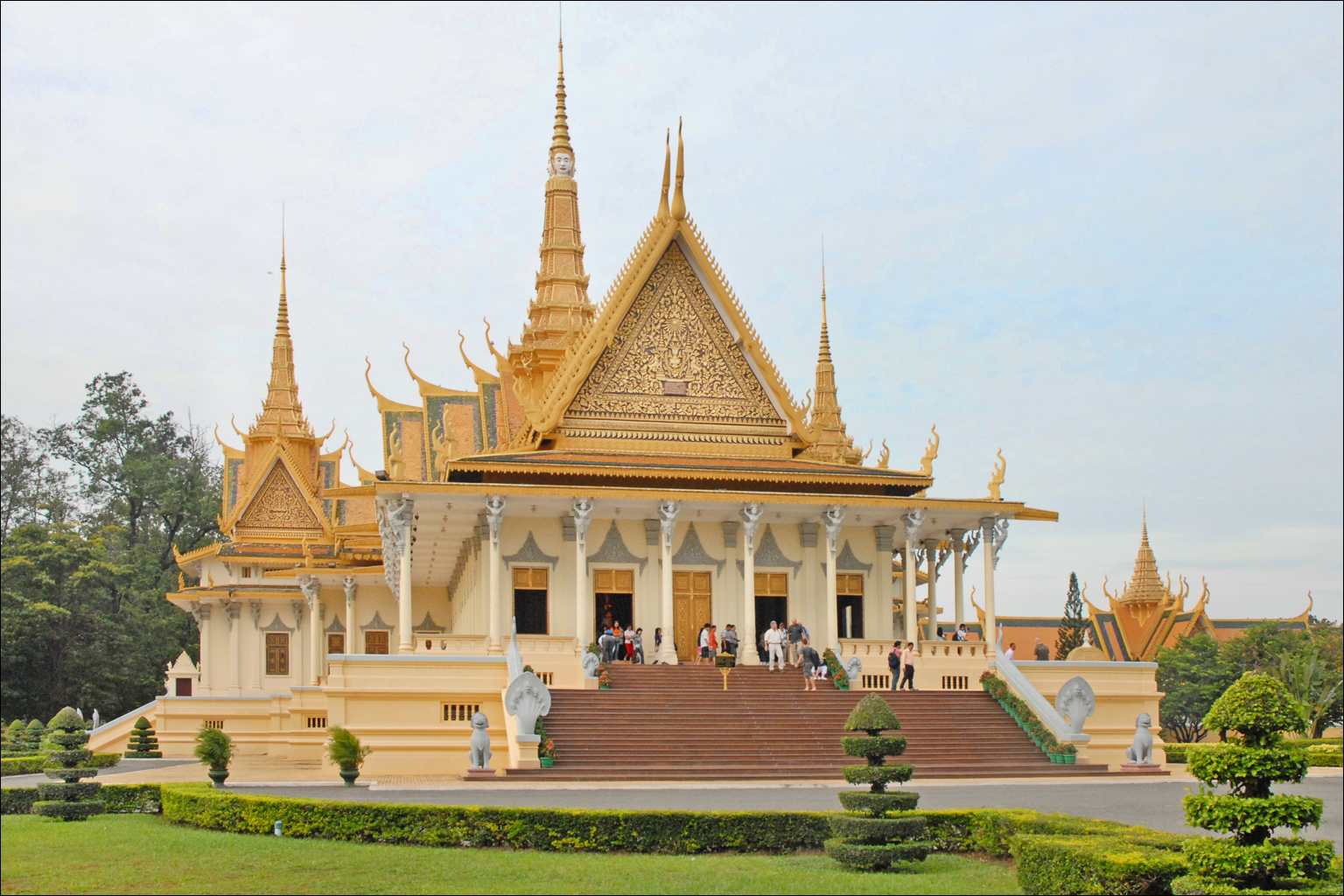 Source: Wikipedia
Source: Wikipedia
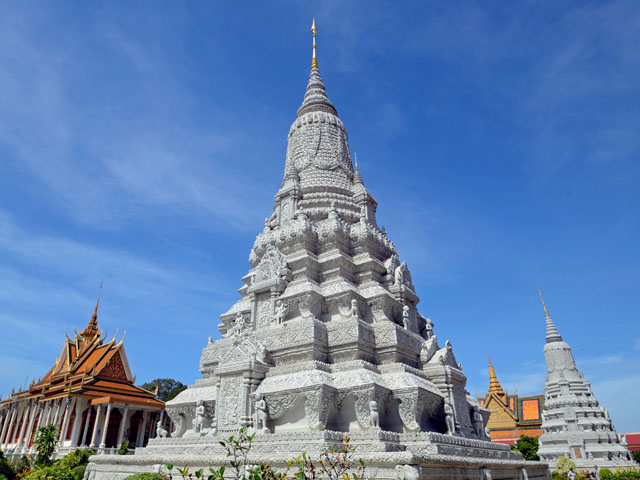 Source: Greencard GolfFavourite spots within the grounds include the Throne Hall (which has a 59m high tower), the the open-air Chan Chaya Pavilion (Dancing Pavilion) and the Silver Pagoda pictured here. It features a sterling silver floor and a statue of the Buddha encrusted with 9,000 diamonds. We hope Marilyn Monroe got to see it!
Source: Greencard GolfFavourite spots within the grounds include the Throne Hall (which has a 59m high tower), the the open-air Chan Chaya Pavilion (Dancing Pavilion) and the Silver Pagoda pictured here. It features a sterling silver floor and a statue of the Buddha encrusted with 9,000 diamonds. We hope Marilyn Monroe got to see it! Image Source / Prestige OnlineThe Istana was built by the British Colonial government to provide a place for the country's officials to make a home. The word 'Istana' actually means 'palace.' This beautiful home apparently cost a whopping RM 908,000 originally, but has undergone more 'modern' renovations in recent years.
Image Source / Prestige OnlineThe Istana was built by the British Colonial government to provide a place for the country's officials to make a home. The word 'Istana' actually means 'palace.' This beautiful home apparently cost a whopping RM 908,000 originally, but has undergone more 'modern' renovations in recent years. Image Source / Prestige OnlineThe neo-Palladian style building sits on top of a hill, surrounded by doors, windows and verandas. The sprawling acres of land surrounding the house include flora, fauna, a Japanese garden, Spice Garden and Swan Pond. It's also open to the public to enjoy.
Image Source / Prestige OnlineThe neo-Palladian style building sits on top of a hill, surrounded by doors, windows and verandas. The sprawling acres of land surrounding the house include flora, fauna, a Japanese garden, Spice Garden and Swan Pond. It's also open to the public to enjoy. Image Source / Prestige OnlineThis beautiful building was formally made the official residence of the President of Brazil in 1958. The palace was designed by a Brazilian architect, and is known as Brazil's first masonry building, with features like the extended columns inspired by colonial times.
Image Source / Prestige OnlineThis beautiful building was formally made the official residence of the President of Brazil in 1958. The palace was designed by a Brazilian architect, and is known as Brazil's first masonry building, with features like the extended columns inspired by colonial times.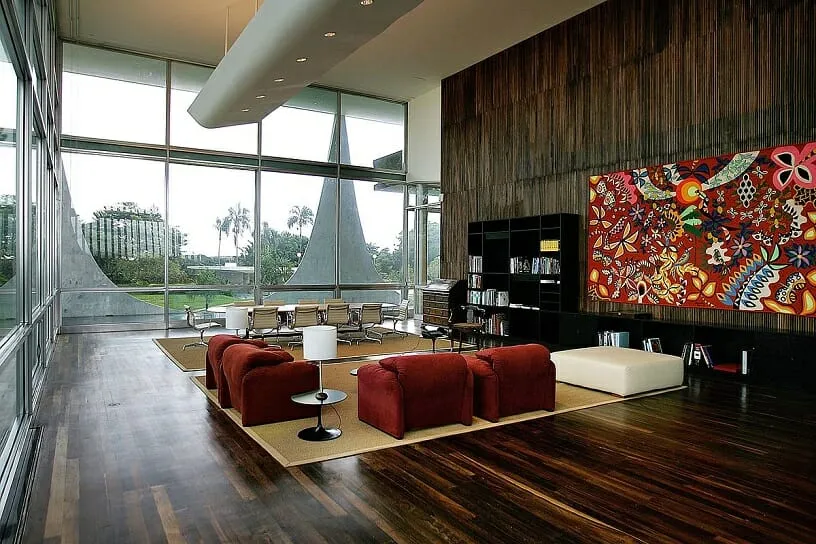 Image Source / Prestige OnlineOn top of this horizontal presidential building is also topped a chapel. The coat of arms of the Federal District was also inspired by the building's column design. The basement of the house has many purposes, including an auditorium, games room and kitchen.
Image Source / Prestige OnlineOn top of this horizontal presidential building is also topped a chapel. The coat of arms of the Federal District was also inspired by the building's column design. The basement of the house has many purposes, including an auditorium, games room and kitchen. Image Source / Prestige OnlineThe Bellevue Palace is steeped in history: built between 1785 and 1787, it was commissioned by Prince August Ferdinand of Prussia, and a popular feature of this palace is the park surrounding it. The word 'Bellevue' means 'beautiful view' - and it certainly is!
Image Source / Prestige OnlineThe Bellevue Palace is steeped in history: built between 1785 and 1787, it was commissioned by Prince August Ferdinand of Prussia, and a popular feature of this palace is the park surrounding it. The word 'Bellevue' means 'beautiful view' - and it certainly is! Image Source / WikipediaThe ownership of the house went to Prussia in 1928, and the main building was converted to a museum for a short time after being used to host the Grand Berlin Art Exhibition. It's also been used as a guest house. It became the first official presidential residence in 1994.
Image Source / WikipediaThe ownership of the house went to Prussia in 1928, and the main building was converted to a museum for a short time after being used to host the Grand Berlin Art Exhibition. It's also been used as a guest house. It became the first official presidential residence in 1994.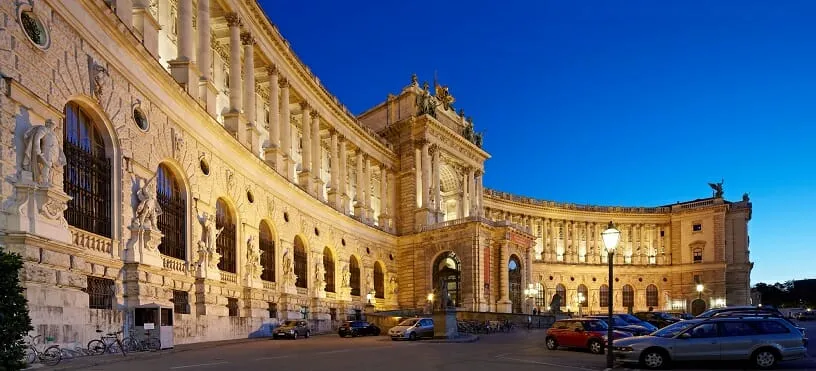 Image Source / Prestige OnlineHofburg Palace is currently the official residence of the President of Austria, but it's seen a varied history of arts and culture. The castle houses the Austrian National Library, and even has a festival hall which can house 1,210 guests. Every resident has added a little more to it through renovations.
Image Source / Prestige OnlineHofburg Palace is currently the official residence of the President of Austria, but it's seen a varied history of arts and culture. The castle houses the Austrian National Library, and even has a festival hall which can house 1,210 guests. Every resident has added a little more to it through renovations. Image Source / Prestige OnlineThe castle was originally built in the 13th century. Under every member of the monarchy that has lived there, it's seen many different updates, resulting in 18 wings, 19 courtyards and 2,583,339 in total square footage. It also includes a Ceremonial Hall called the Zeremoniensaal.
Image Source / Prestige OnlineThe castle was originally built in the 13th century. Under every member of the monarchy that has lived there, it's seen many different updates, resulting in 18 wings, 19 courtyards and 2,583,339 in total square footage. It also includes a Ceremonial Hall called the Zeremoniensaal. Image Source / Prestige OnlineIt's believed that Prague Castle goes back as far as the year 880, built by Prince Bořivoj of the house of Premyslides. The castle has since seen many important residents, including kings, heads of state and even the Prague Bishop. The castle was rebuilt under the order of Charles IV in the 14th century.
Image Source / Prestige OnlineIt's believed that Prague Castle goes back as far as the year 880, built by Prince Bořivoj of the house of Premyslides. The castle has since seen many important residents, including kings, heads of state and even the Prague Bishop. The castle was rebuilt under the order of Charles IV in the 14th century. Image Source / Prestige OnlineWhilst originally restricted, some of the castle areas eventually became open to the public in 1989. This includes the Ball Game Hall, Royal Garden and Imperial Stables. These days it is the residence of the president, and also houses the Crown Jewels.
Image Source / Prestige OnlineWhilst originally restricted, some of the castle areas eventually became open to the public in 1989. This includes the Ball Game Hall, Royal Garden and Imperial Stables. These days it is the residence of the president, and also houses the Crown Jewels.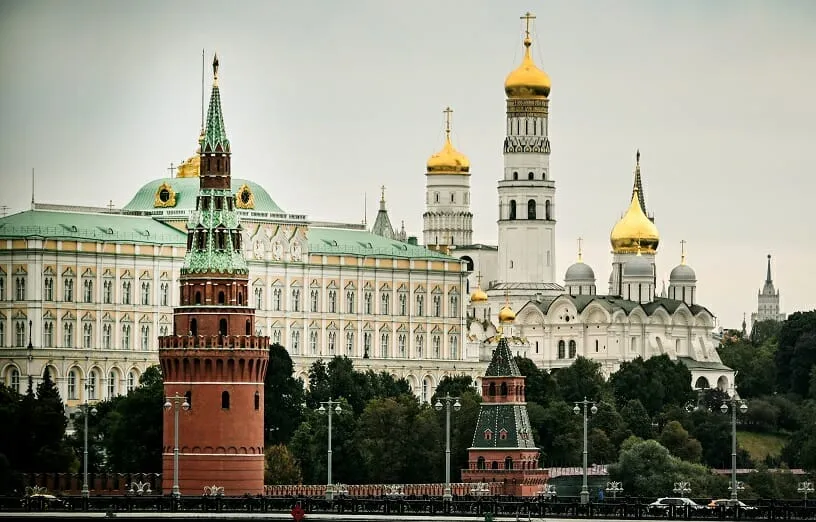 Image Source / Prestige OnlinePresident Vladimir Putin has more than one home, and the Kremlin is one of them - as well as being his 'official' residence. It's a complex that shows off stunning domed cathedrals and palaces, built in the heart of the city of Moscow. It was built in 1156.
Image Source / Prestige OnlinePresident Vladimir Putin has more than one home, and the Kremlin is one of them - as well as being his 'official' residence. It's a complex that shows off stunning domed cathedrals and palaces, built in the heart of the city of Moscow. It was built in 1156.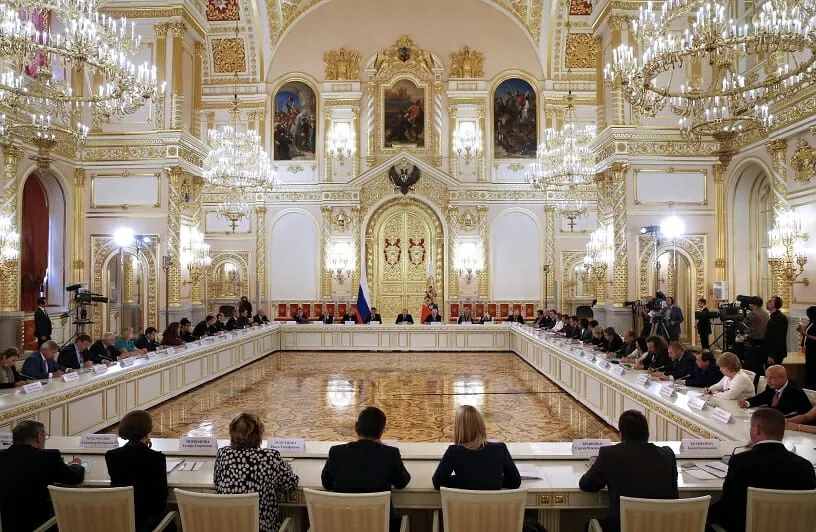 Image Source / Prestige OnlineThe white stone walls are just one of many renovations this palace has seen over the years. Lots of parts of the building are also open to the public, including the cathedrals and museums. It's a key tourist attraction based on its placement next to Red Square.
Image Source / Prestige OnlineThe white stone walls are just one of many renovations this palace has seen over the years. Lots of parts of the building are also open to the public, including the cathedrals and museums. It's a key tourist attraction based on its placement next to Red Square. Image Source / CNTThis incredible palace was designed by Polish architect Chrystian Piotr Aigner. It was first build in 1643, but it was actually 1818 that saw the building first used for government purposes. At the front of the palace, you can find a statue of Józef Poniatowski, a Polish general.
Image Source / CNTThis incredible palace was designed by Polish architect Chrystian Piotr Aigner. It was first build in 1643, but it was actually 1818 that saw the building first used for government purposes. At the front of the palace, you can find a statue of Józef Poniatowski, a Polish general.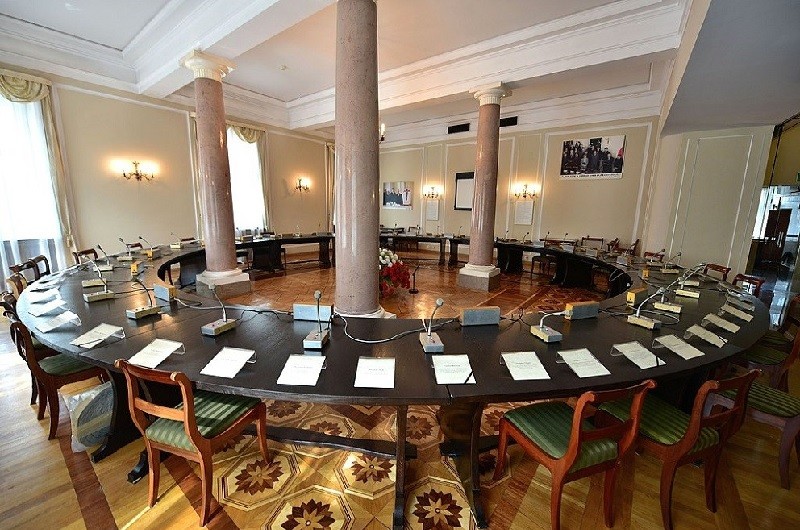 Image Source / ITS PolandNow the official home of the president and head of state, the house has been the site of many important events in Polish, European and world history. This included the building hosting attendees of the Consitution of May 3, 1791, the first European constitution.
Image Source / ITS PolandNow the official home of the president and head of state, the house has been the site of many important events in Polish, European and world history. This included the building hosting attendees of the Consitution of May 3, 1791, the first European constitution.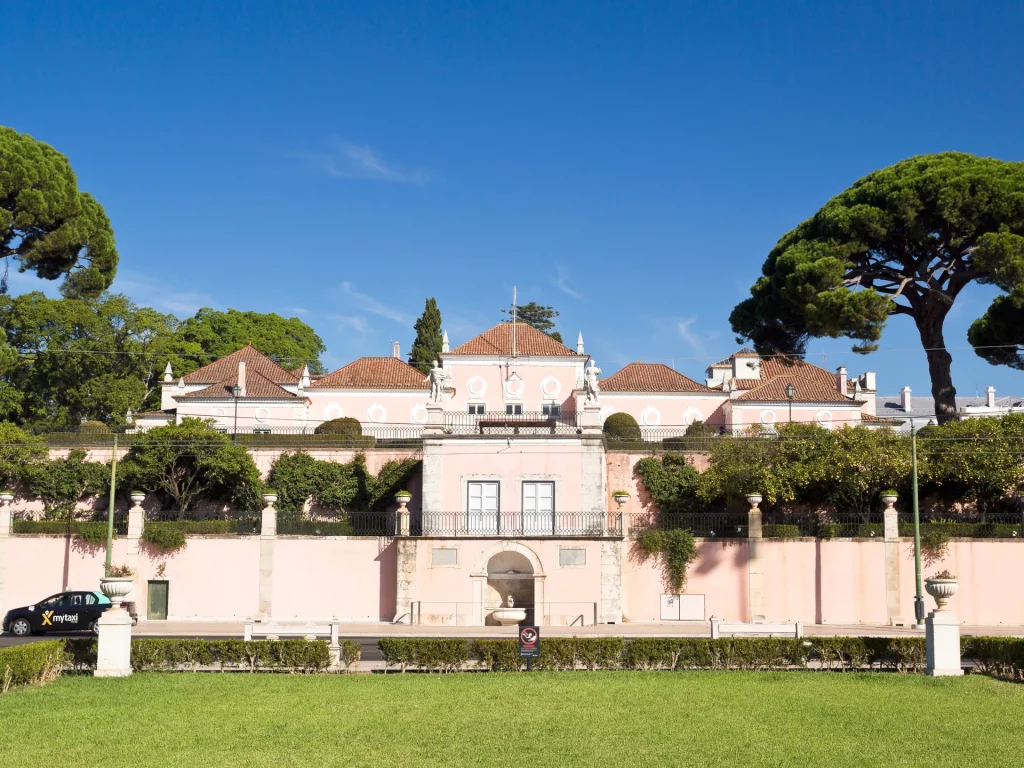 Image Source / CNTThis amazing palace in Lisbon, Portugal, had construction completed in 1754 and was originally intended to be the home of the kings of Portugal. In 1910, that changed when the palace became the official residence of presidents of the republic instead.
Image Source / CNTThis amazing palace in Lisbon, Portugal, had construction completed in 1754 and was originally intended to be the home of the kings of Portugal. In 1910, that changed when the palace became the official residence of presidents of the republic instead.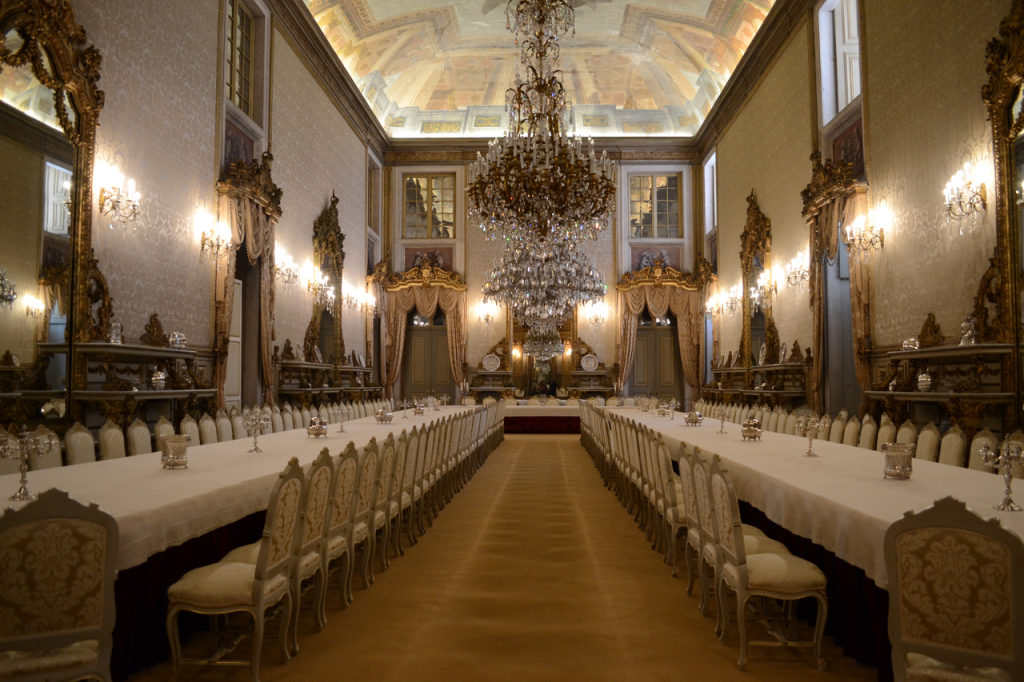 Image Source / Wikimedia CommonsWith beautiful surroundings, the palace is facing the Tagus River, based in the Belém District of Lisbon, and the front of the palace is also by the public square of Praça Afonso de Albuquerque. Members of the public can also tour the palace.
Image Source / Wikimedia CommonsWith beautiful surroundings, the palace is facing the Tagus River, based in the Belém District of Lisbon, and the front of the palace is also by the public square of Praça Afonso de Albuquerque. Members of the public can also tour the palace. Image Source / CNTThe Presidential Palace of Suriname (a small country in South America) shows off an attractive Dutch Colonial style, make it a little more modest than a lot of palaces in the world. Suriname was originally a colony of Holland until the 1970s, and the palace was built in 1730.
Image Source / CNTThe Presidential Palace of Suriname (a small country in South America) shows off an attractive Dutch Colonial style, make it a little more modest than a lot of palaces in the world. Suriname was originally a colony of Holland until the 1970s, and the palace was built in 1730.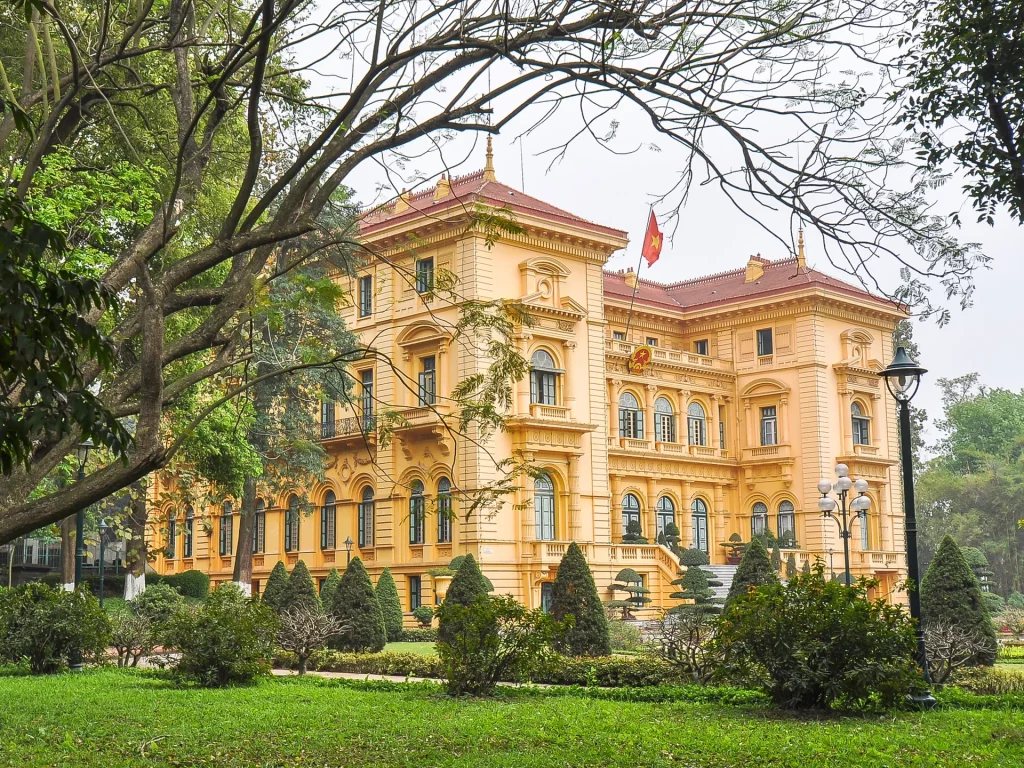 Image Source / CNTThis palace is the official home of the president of Vietnam, located in Hanoi. Its construction was completed in 1906, and was actually built by a French architect named Auguste Henri Vildieu. For a bright and chirpy finish, the building is bright yellow.
Image Source / CNTThis palace is the official home of the president of Vietnam, located in Hanoi. Its construction was completed in 1906, and was actually built by a French architect named Auguste Henri Vildieu. For a bright and chirpy finish, the building is bright yellow. Image Source / Wikimedia CommonsWhile the architecture of the palace suggests its clear European inspiration, there is an inclusion of Vietnamese culture shown through the mango trees planted around the palace. The grounds also include wrought iron gates and sentry boxes for security.
Image Source / Wikimedia CommonsWhile the architecture of the palace suggests its clear European inspiration, there is an inclusion of Vietnamese culture shown through the mango trees planted around the palace. The grounds also include wrought iron gates and sentry boxes for security.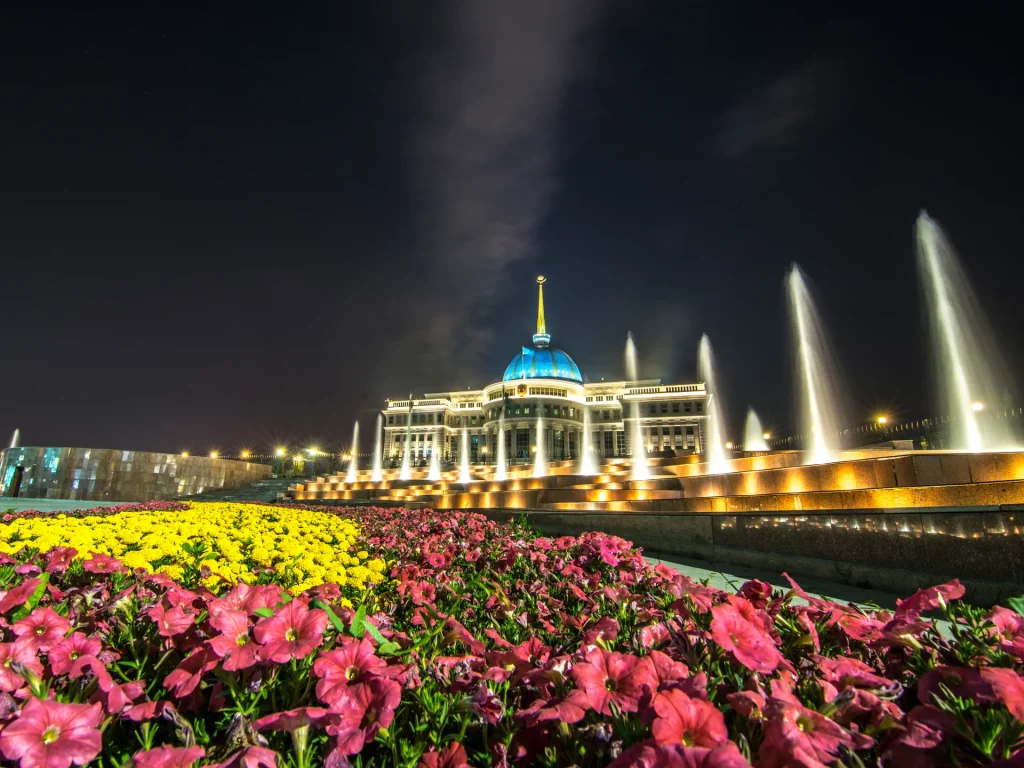 Image Source / CNTThe Akorda Presidential Palace opened in 2004, which is quite late compared to some of the historical palaces on this list! It's located in the capital city of Kazakhstan, Astana, and reveals a height of 262 feet, an impressive blue and gold dome and a towering spire. It took designers, builders and architects from 10 different countries to complete it.
Image Source / CNTThe Akorda Presidential Palace opened in 2004, which is quite late compared to some of the historical palaces on this list! It's located in the capital city of Kazakhstan, Astana, and reveals a height of 262 feet, an impressive blue and gold dome and a towering spire. It took designers, builders and architects from 10 different countries to complete it.